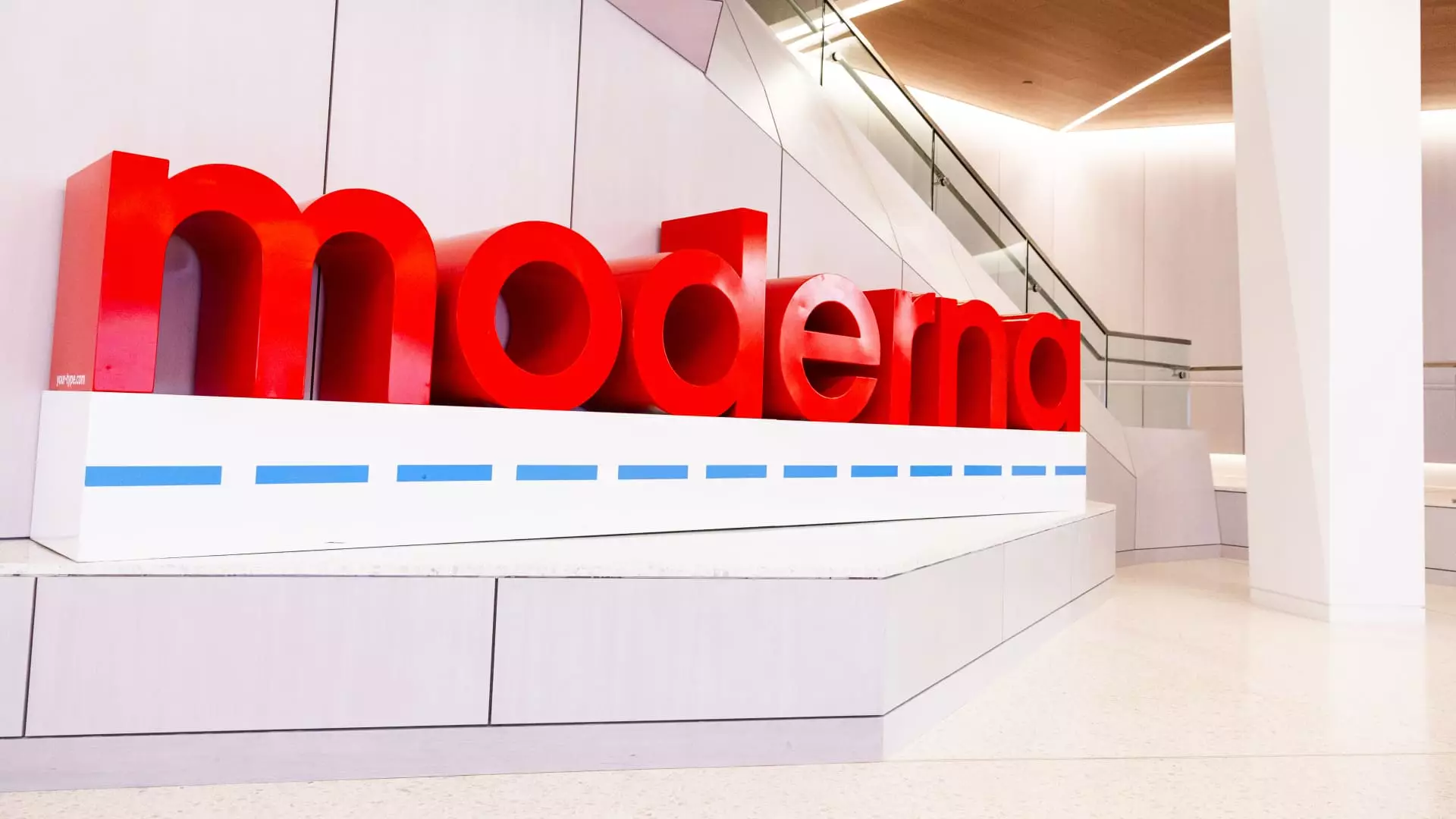In a notable turnaround, Moderna reported an unexpected profit for the third quarter of the fiscal year, defying the pessimistic Wall Street forecasts. This achievement is attributed to a blend of strategic cost reductions and stronger-than-anticipated sales from its Covid vaccine portfolio. As the biotechnology firm pivots from pandemic-era highs to a new business model, the implications for its future growth and product pipeline are significant.
Moderna’s recent financial disclosures showed a net income of $13 million—or 3 cents per share—this quarter, a stark contrast to the staggering net loss of $3.63 billion (or $9.53 per share) reported during the same period last year. This dramatic shift underscores the company’s resilience in navigating the post-Covid landscape. The company’s concerted efforts to cut costs are manifesting clearly, with a goal set to achieve savings of approximately $1.1 billion by 2027. This transformation aims to address the potential revenue erosion stemming from the waning demand for Covid vaccines, which have previously driven its success.
For the first time, revenues also included sales from Moderna’s newly launched vaccine targeting respiratory syncytial virus (RSV), marking a significant expansion of its product lineup. The company is positioning itself to explore further opportunities within infectious diseases, indicating a strategic shift from being solely reliant on its Covid product.
Moderna’s reported revenue of $1.86 billion exceeded expectations—analysts had predicted $1.25 billion—reflecting stronger demand for its Covid shots. Notably, $1.2 billion of this revenue stemmed from the U.S. marketplace alone, with approximately $600 million coming from international markets. However, disappointing sales numbers for the RSV vaccine, which generated $10 million, provide insight into the complexities of vaccine distribution at a time when many healthcare distributors had concluded their ordering cycles. This sluggish performance highlights the challenges faced when launching new products in an already compressed market environment, especially outside of peak seasons.
Chief Executive Officer Stéphane Bancel emphasized the role of timely product launches, noting that an expedited approval process allowed Moderna to meet demand more effectively, amplifying their sales figures. Early distribution efforts led to nearly double the global shipment of the Covid vaccine compared to the previous year, signifying a successful operational strategy during a challenging period.
Moderna’s full-year sales guidance for 2024 has been reiterated, with expectations of reaching between $3 billion and $3.5 billion. However, there are growing concerns surrounding the competitive landscape for respiratory vaccines, especially in the U.S. market, where various players have intensified their focus on breakthrough products. The company’s stock has suffered nearly a 50% decline year-to-date, as investors grapple with uncertainties regarding Moderna’s long-term viability outside the pandemic domain.
Despite recent challenges, Moderna is banking on its innovative messenger RNA platform to diversify its product slate. The company currently has 45 distinct products in development, with aspirations to launch 10 new therapies across the next three years. This includes vaccines for both influenza and various cancer treatment modalities, demonstrating the company’s commitment to diversifying its portfolio beyond Covid-related products.
A closer look at the fiscal breakdown reveals significant strides in cost management. Moderna reduced its cost of sales by 77% year-over-year to $514 million, which included notable write-offs for unused Covid vaccine doses and adjustments tied to manufacturing cost reductions. Research and development expenses, while still substantial at $1.1 billion, saw a modest decrease, attributed largely to lower clinical trial costs and other developmental expenditures.
The reduced selling, general, and administrative expenses (down 36% to $281 million) also reflect the company’s shift toward a more frugal operational approach. This strategic recalibration positions Moderna well to handle market fluctuations while still investing in future R&D endeavors.
As Moderna prepares for its next chapter, it must adapt to a post-pandemic reality characterized by changing market dynamics and a reviving focus on innovation. The recent profitability in a challenging climate, driven by robust management strategies and an evolving product portfolio, may serve as a foundation for its future. Investor confidence will likely hinge upon how effectively Moderna can transition its successes from the pandemic into sustainable long-term growth. The company’s journey ahead underscores a critical balance of innovation, market responsiveness, and financial stewardship as it seeks to redefine itself in an evolving biotech landscape.

Leave a Reply